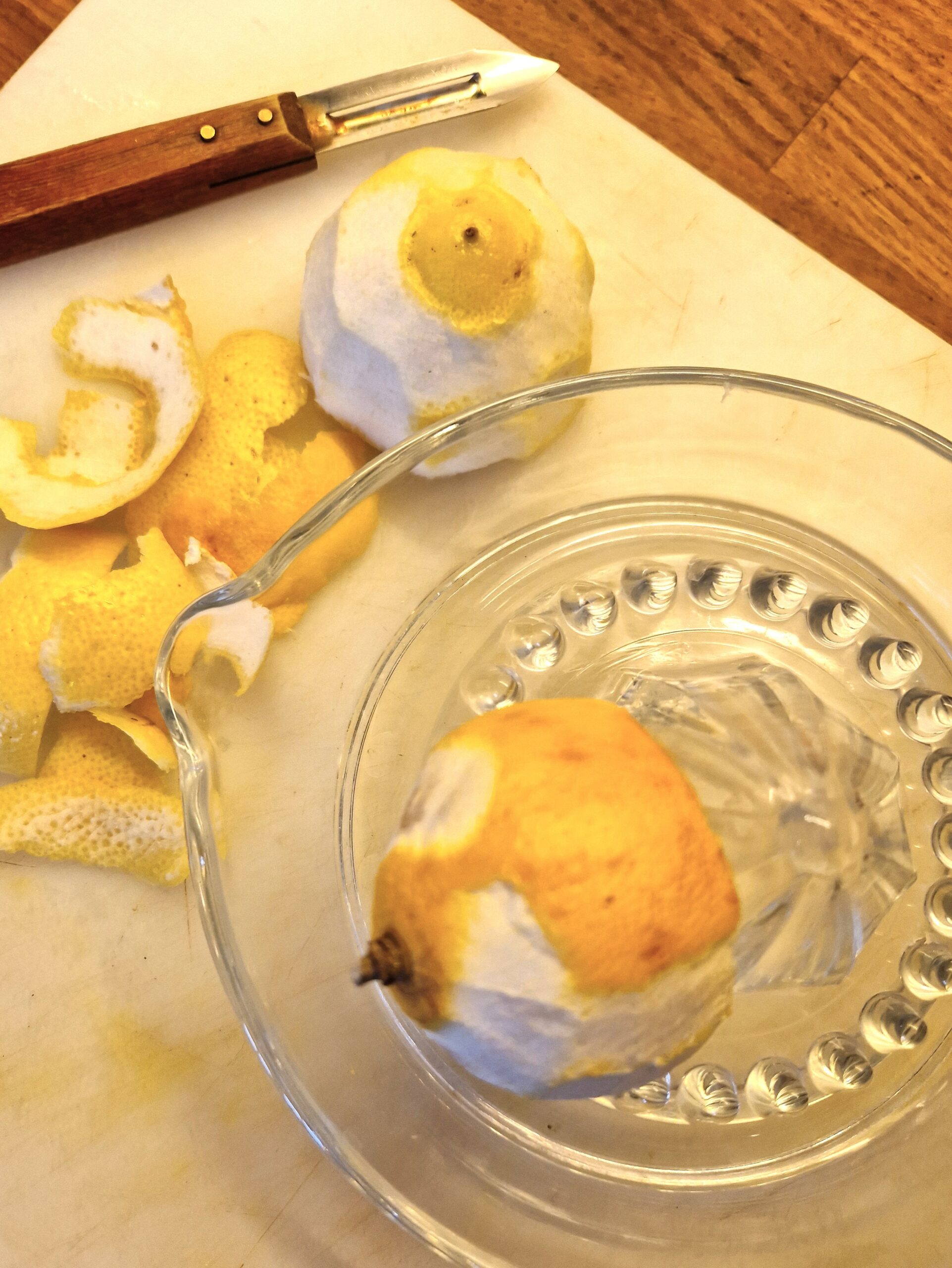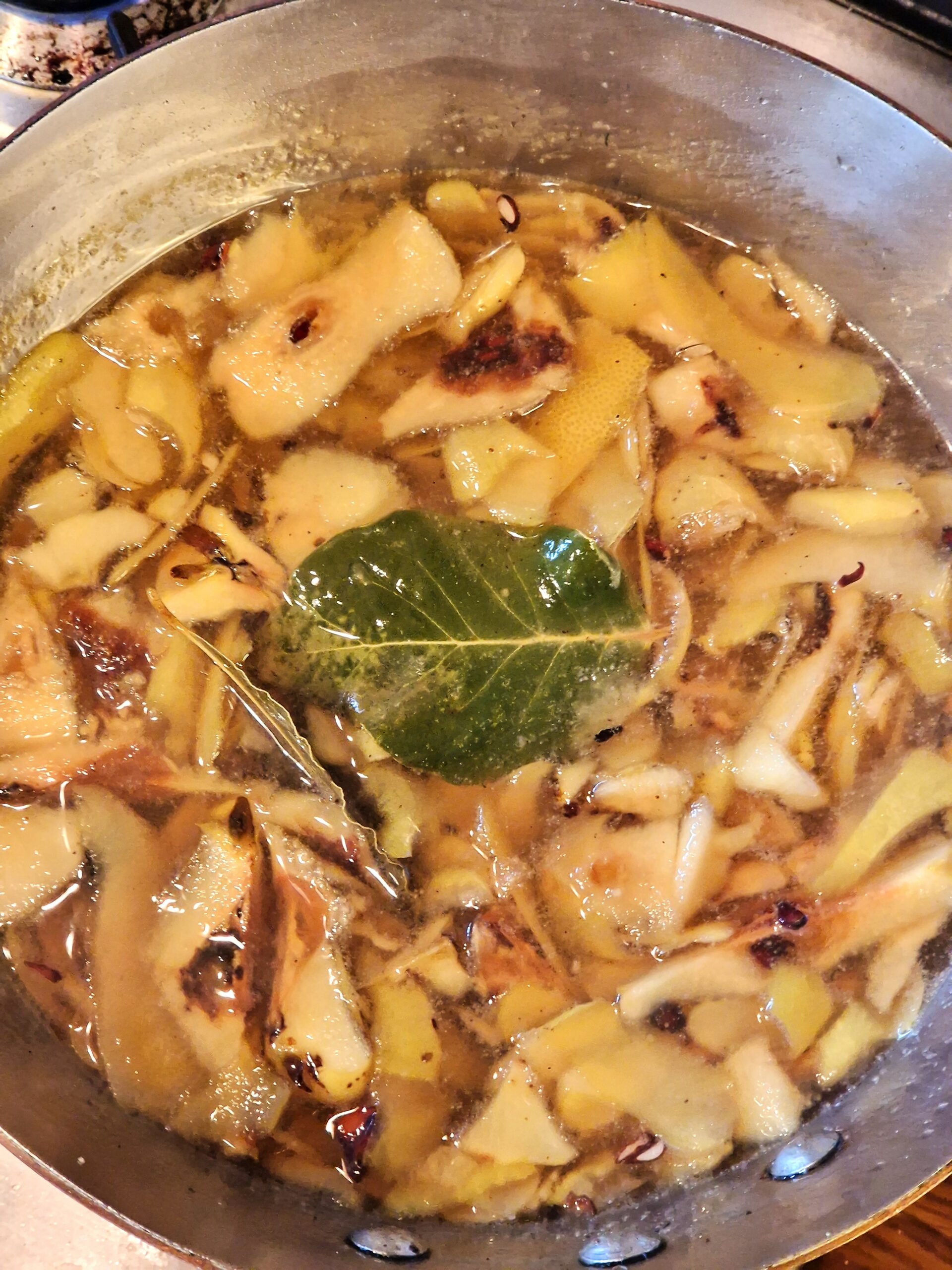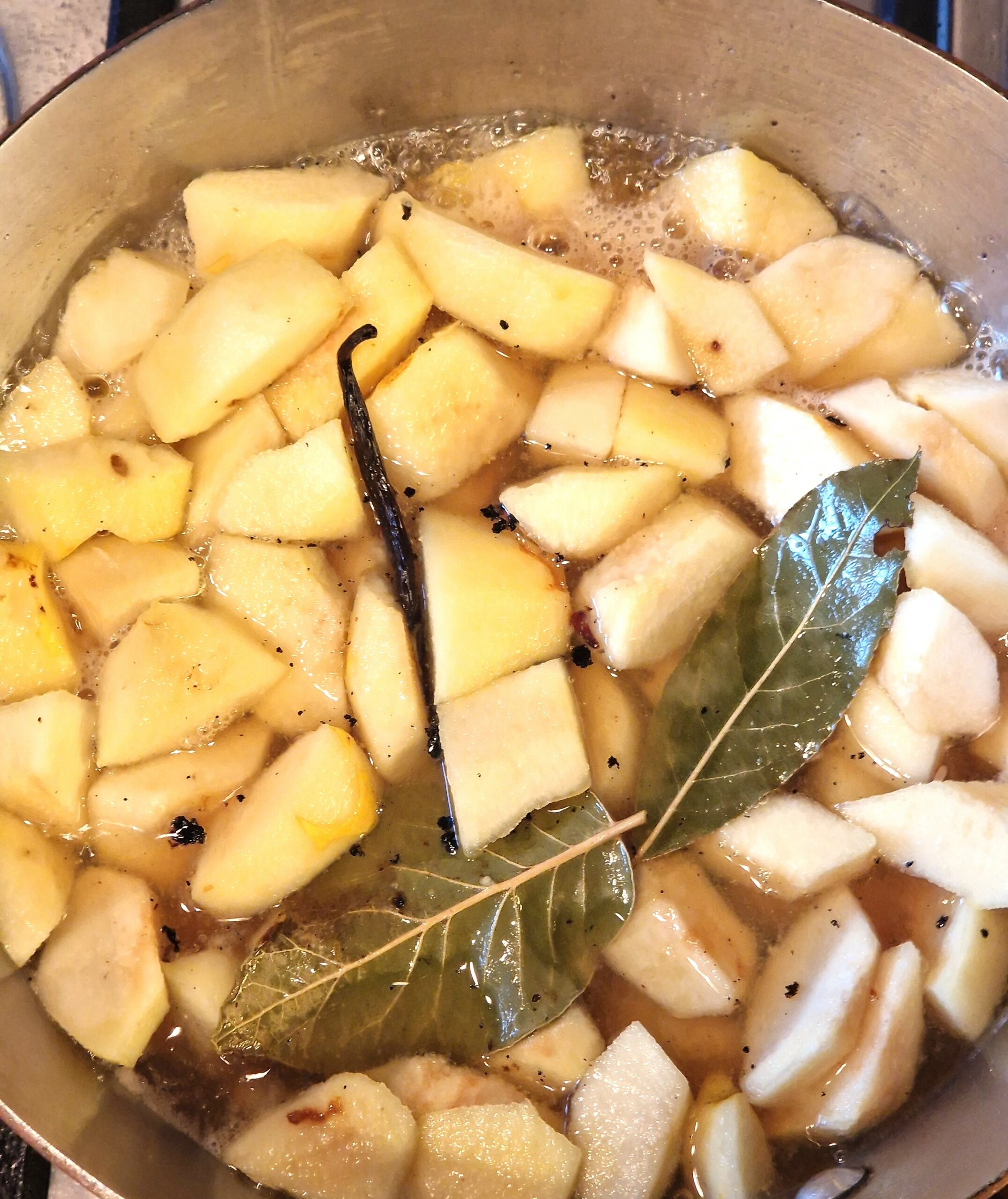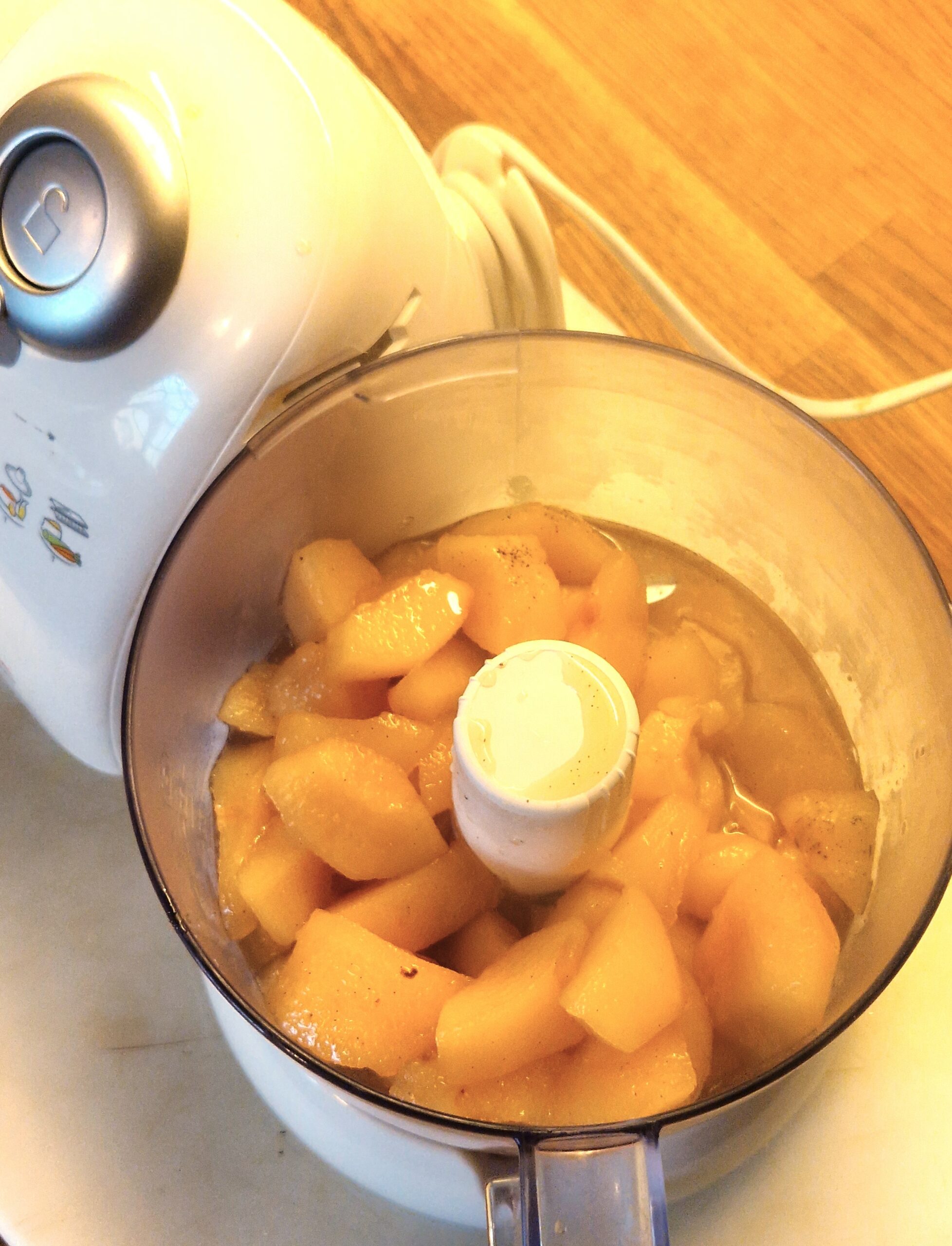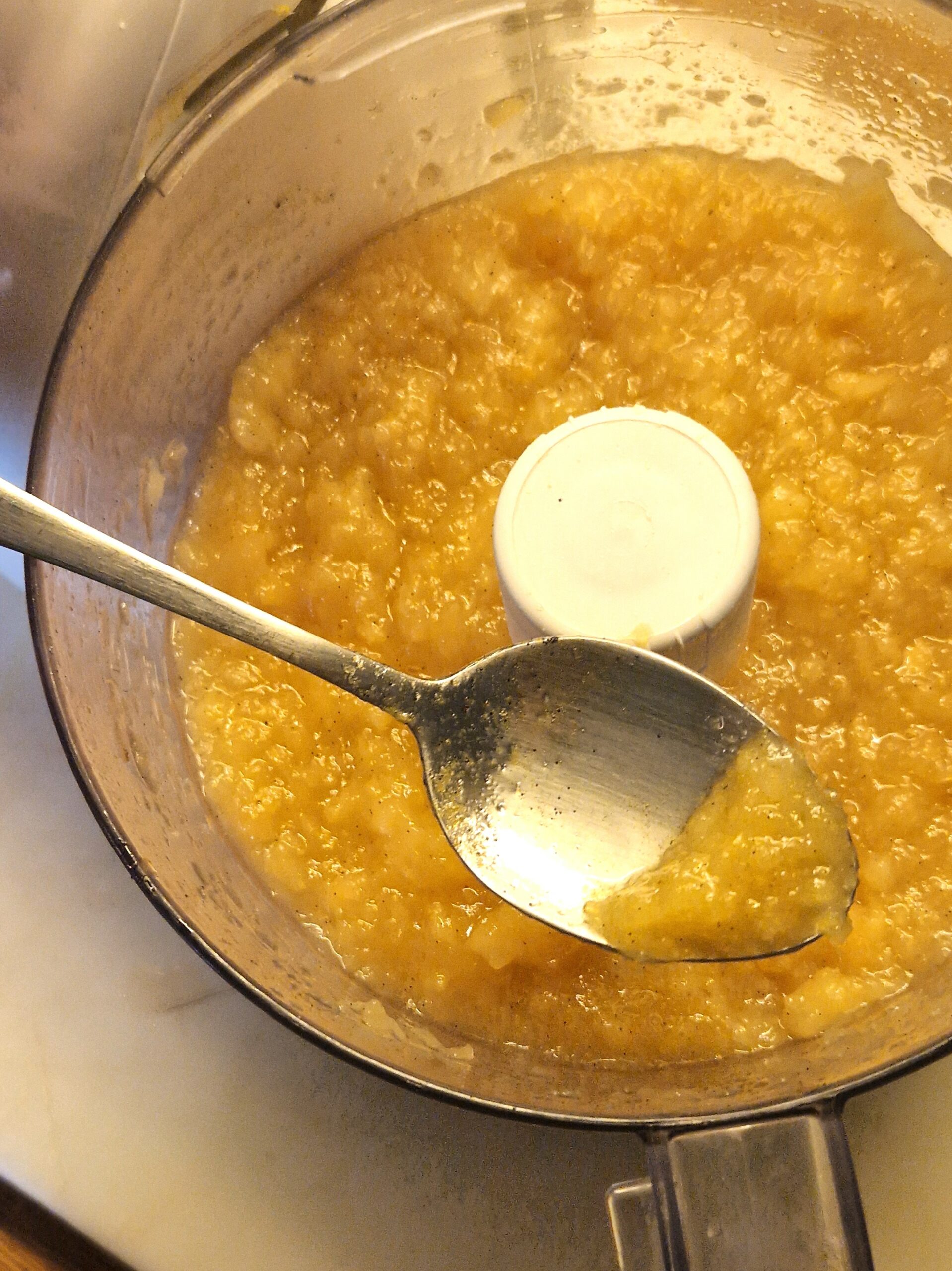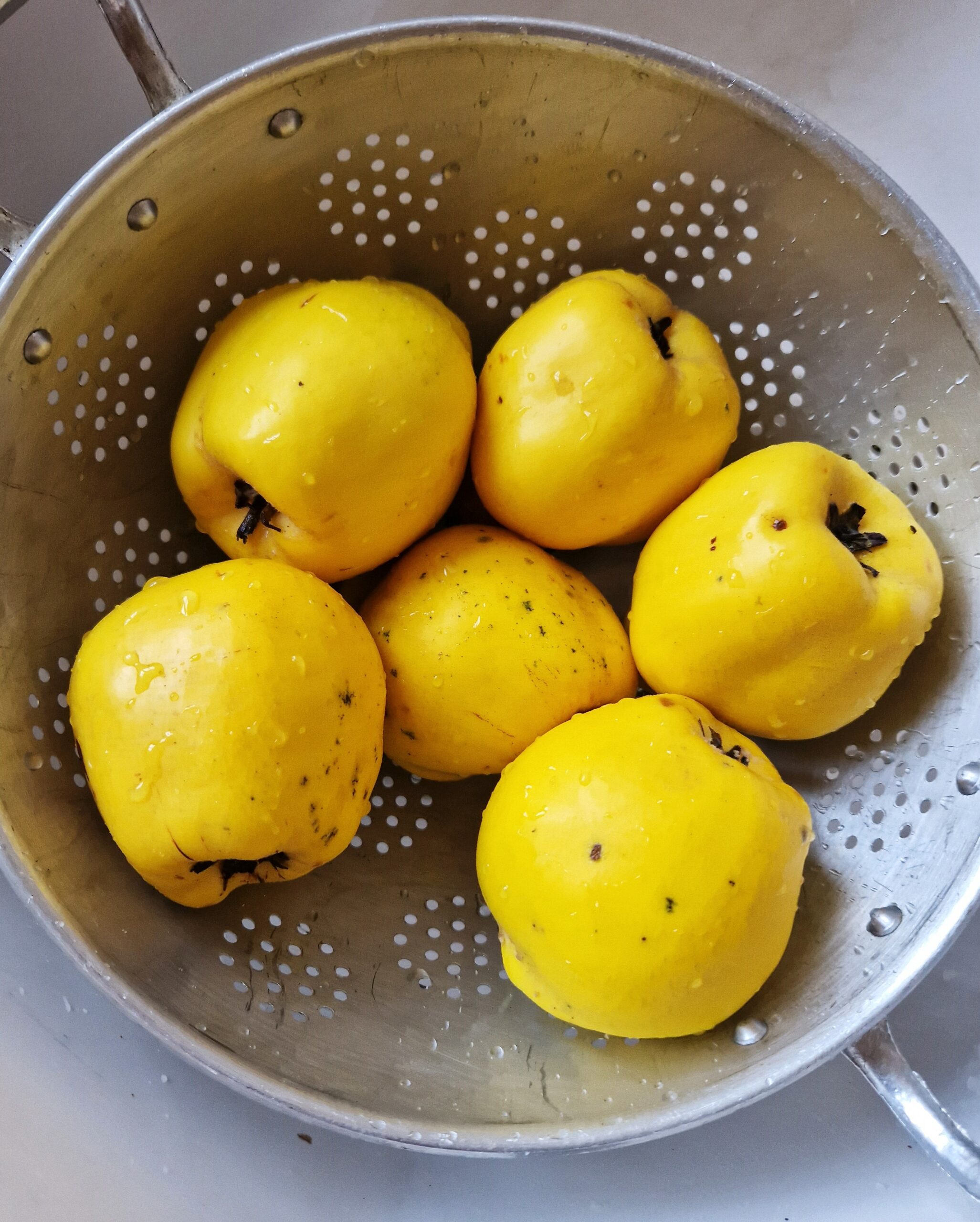
The arrival of quince on the market stands always signals the beginning of winter for me; quince are the last tree fruits to arrive at the end of the season and, since they keep well, they are also one of the last available at the end of the year. My grandma primarily used quince in combination with other fruits in jam making, as its high pectin content often makes adding pectin unnecessary. Quince are also used to make membrillo, the famous Spanish quince paste that is often paired with cheese. This recipe is for a compote, something like a jam but with less sugar (jam has a pretty high ratio of sugar to fruit for the sugar’s preservative properties. This compote needs to be refrigerated, in a tightly sealed jar).
I served this compote as an appetizer on slices of goat cheese, finished with a chiffonnade of jambon de Bayonne, it was a big hit. Also tried it at the Holidays with terrine of whole foie gras, wow, really delicious!
Quince compote with bay leaf and vanilla
Ingredients
- 1 kilo quince, whole
- 1 lemon
- 300 grams honey
- 300 grams raw sugar
- 500 ml water
- 2 bay leaves
- 1/2 vanilla bean
Note
Makes about 3 cups of compote
Preparation
- Using a peeler, remove the zest from the lemon, then juice it. Cut the quince, with the seed and skin, into 1″ dice. Cooking the skin with the give the compote a lovely rose-coral color and the seeds add pectin. Combine the quince, lemon juice and lemon zest in a heavy saucepan or dutch oven, stir well.
- Add the sugar, honey and bay leaves. Split the vanilla bean, scrap out the seeds with the edge of a small knife and add seeds and pod to the pan. Add the water and mix well.
- Bring to a boil, stir well then remove any scum with a ladle. Lower heat to a simmer, cover the quince with a sheet of parchment paper directly on the surface of the fruit. Continue cooking gently until the quince is very soft.
- Over high heat, mash the quince with a wooden spoon until it is a thick pulp. If the compote is too thin, continue cooking, stirring constantly, until it reaches consistency. Pass the compote through a food mill, cool.
Note that, if your quince have a lot of blemishes or (heaven forbid) worms inside, you can still use them but I suggest a slightly different method. Peel and core the quince, removing any bad parts. Cook the peel and core with the water, sugar and honey until the sirop takes on a pinkish hue. Strain this over the raw fruit, add the bay leaves and vanilla, simmer until very tender and then either put the pulp through the food mill or puree in a food processor. Obviously the first method is easier, as you avoid the difficult task of peeling the quince.
